Femtosecond Laser Ablated FBG with Composite Microstructure for Hydrogen Sensor Application
Abstract
:1. Introduction
2. Principle of Sensor
3. Experiment
4. Results and Discussion
5. Conclusions
Acknowledgments
Author Contributions
Conflicts of Interest
References
- Hübert, T.; Boon-Brett, L.; Black, G.; Banach, U. Hydrogen sensors—A review. Sens. Actuators B Chem. 2001, 2, 329–352. [Google Scholar] [CrossRef]
- Caucheteur, C.; Debliquy, M.; Lahem, D.; Megret, P. Hybrid fiber gratings coated with a catalytic sensitive layer for hydrogen sensing in air. Opt. Express 2008, 16, 16854–16859. [Google Scholar] [CrossRef] [PubMed]
- Villatoro, J.; Luna-Moreno, D.; Monzón-Hernández, D. Optical fiber hydrogen sensor for concentrations below the lower explosive limit. Sens. Actuators B Chem. 2005, 110, 23–27. [Google Scholar] [CrossRef]
- Aleixandre, M.; Corredera, P.; Hernanz, M.L.; Gutierrez-Monreal, J. Development of fiber optic hydrogen sensors for testing nuclear waste repositories. Sens. Actuators B Chem. 2005, 107, 113–120. [Google Scholar] [CrossRef]
- Bévenot, X.; Trouillet, A.; Veillas, C.; Gagnaire, H.; Clément, M. Hydrogen leak detection using an optical fiber sensor for aerospace applications. Sens. Actuators B Chem. 2000, 67, 57–67. [Google Scholar] [CrossRef]
- Samsudin, M.R.; Shee, Y.G.; Mahamd Adikan, F.R.; Abdul Razak, B.B.; Dahari, M. Fiber bragg gratings hydrogen sensor for monitoring the degradation of transformer oil. IEEE Sens. J. 2016, 16, 2993–2999. [Google Scholar] [CrossRef]
- Saad, S.; Hassine, L. Hydrogen detection with FBG sensor technology for disaster prevention. Photonic Sens. 2013, 3, 214–223. [Google Scholar] [CrossRef]
- Yang, M.; Sun, Y.; Zhang, D.; Jiang, D. Using Pd/WO3 composite thin films as sensing materials for optical fiber hydrogen sensors. Sens. Actuators B Chem. 2010, 143, 750–753. [Google Scholar] [CrossRef]
- Ma, G.M.; Li, C.R.; Luo, Y.T. High sensitive and reliable fiber Bragg grating hydrogen sensor for fault detection of power transformer. Sens. Actuators B Chem. 2012, 169, 195–198. [Google Scholar] [CrossRef]
- Trouillet, A.; Marin, E.; Veillas, C. Fiber gratings for hydrogen sensing. Meas. Sci. Technol. 2006, 17, 1124–1128. [Google Scholar] [CrossRef]
- Schroeder, K.; Ecke, W.; Willsch, R. Optical fiber Bragg grating hydrogen sensor based on evanescent-field interaction with palladium thin-film transducer. Opt. Lasers Eng. 2009, 10, 1018–1022. [Google Scholar] [CrossRef]
- Yang, M.; Dai, J. Fiber optic hydrogen sensors: A review. Photonic Sens. 2014, 4, 300–324. [Google Scholar] [CrossRef]
- Karanja, J.M.; Dai, Y.; Zhou, X.; Liu, B.; Yang, M. Micro-structured femtosecond laser assisted FBG hydrogen sensor. Opt. Express 2015, 23, 31034–31042. [Google Scholar] [CrossRef] [PubMed]
- Yang, M.; Yang, Z.; Dai, J.; Zhang, D. Fiber optic hydrogen sensors with sol-gel WO3 coatings. Sens. Actuators B Chem. 2012, 166, 632–636. [Google Scholar] [CrossRef]
- Luna-Moreno, D.; Monzón-Hernández, D.; Villatoro, J.; Badenes, G. Optical fiber hydrogen sensor based on core diameter mismatch and annealed Pd-Au thin films. Sens. Actuators B Chem. 2007, 125, 66–71. [Google Scholar] [CrossRef]
- Sutapun, B.; Tabib-Azar, M.; Kazemi, A. Pd-coated elastooptic fiber optic Bragg grating sensors for multiplexed hydrogen sensing. Sens. Actuators B Chem. 1999, 60, 27–34. [Google Scholar] [CrossRef]
- Knapton, A.G. Palladium Alloys for Hydrogen Diffusion Membranes. Platin. Met. Rev. 1977, 21, 44–50. [Google Scholar]
- Tien, C.; Chen, H.; Liu, W.; Jyu, S.; Lin, S.; Lin, Y. Hydrogen sensor based on side-polished fiber Bragg gratings coated with thin palladium film. Thin Solid Films 2008, 16, 5360–5363. [Google Scholar] [CrossRef]
- Luo, Y.; Wang, H.; Ma, G.; Song, H.; Li, C.; Jiang, J. Research on high sensitive D-shaped FBG hydrogen sensors in power transformer oil. Sensors 2016, 16, 1641. [Google Scholar] [CrossRef] [PubMed]
- Borowiec, A.; Haugen, H.K. Femtosecond laser micromachining of grooves in indium phosphide. Appl. Phys. A 2004, 79, 521–529. [Google Scholar] [CrossRef]
- Mazur, E. Femtosecond laser micromachining in transparent materials. Nat. Photonics 2008, 2, 219–225. [Google Scholar]
- Rao, Y.; Ran, Z. Optic fiber sensors fabricated by laser-micromachining. Opt. Fiber Technol. 2013, 6, 808–821. [Google Scholar] [CrossRef]
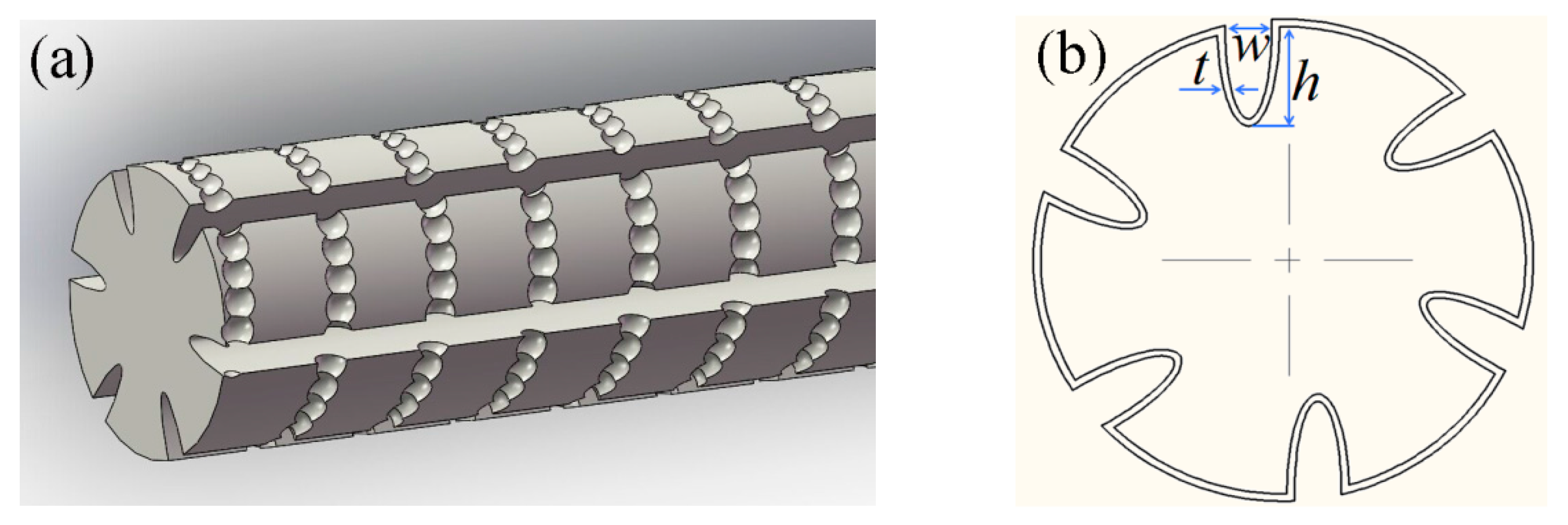
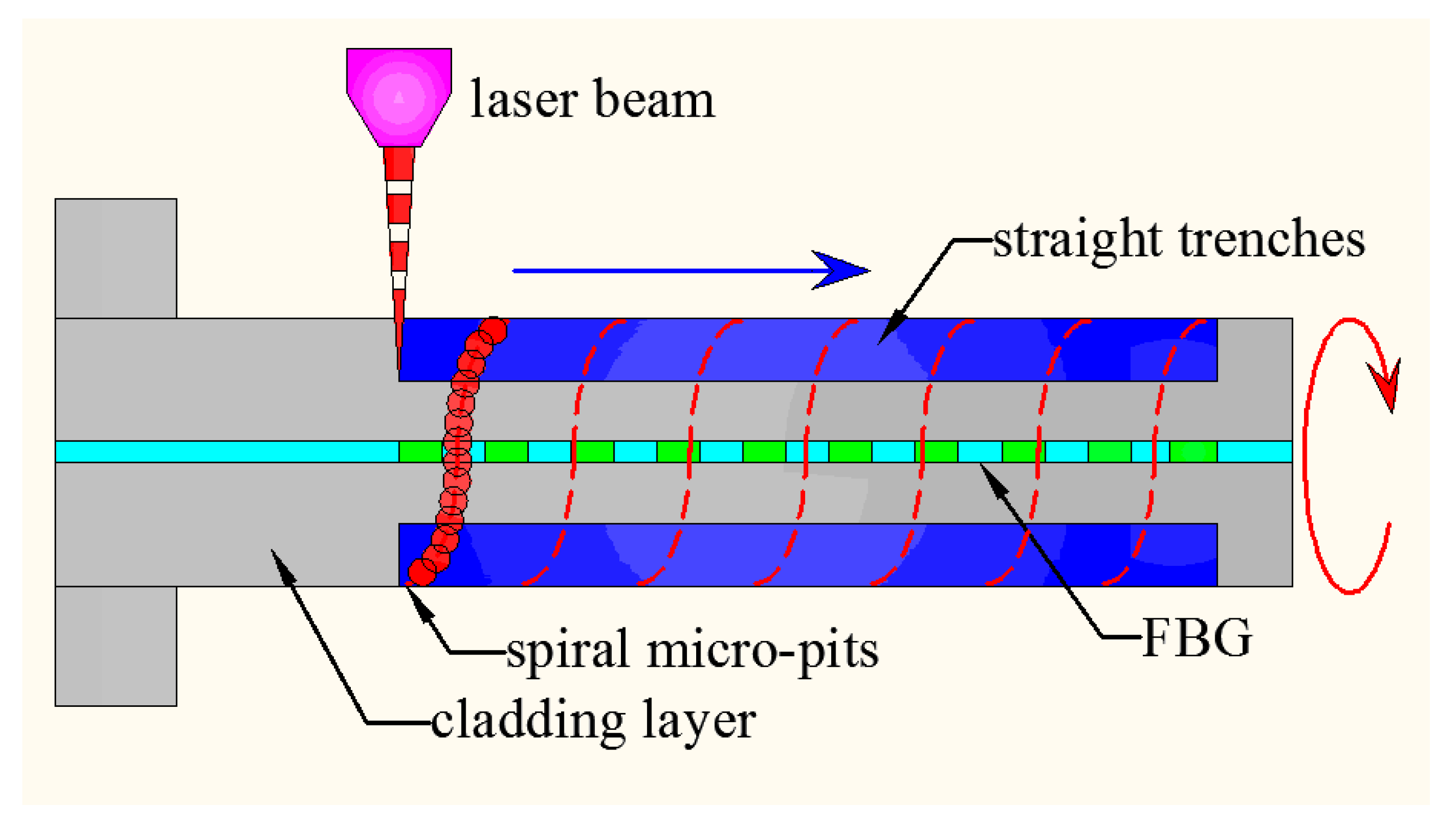
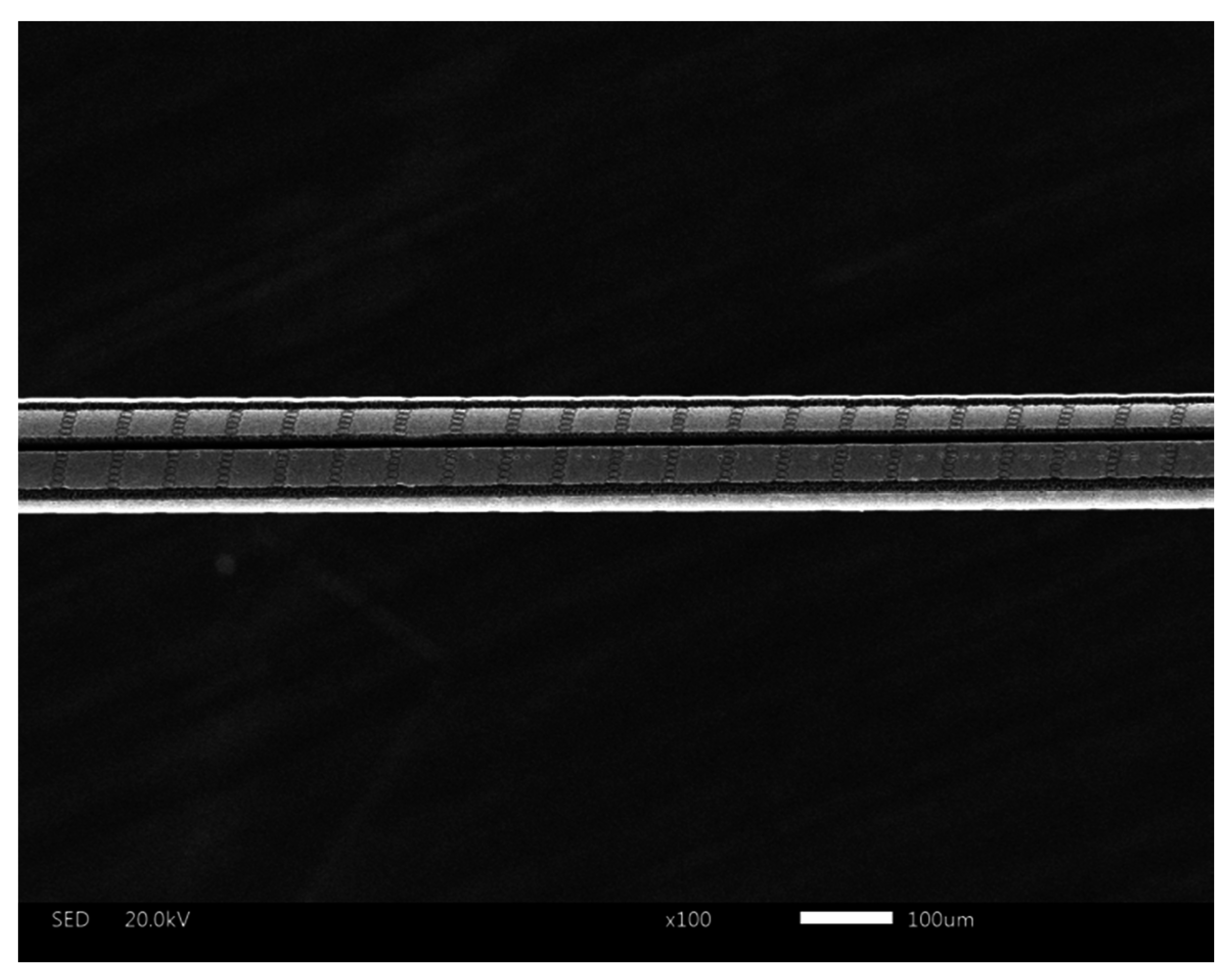
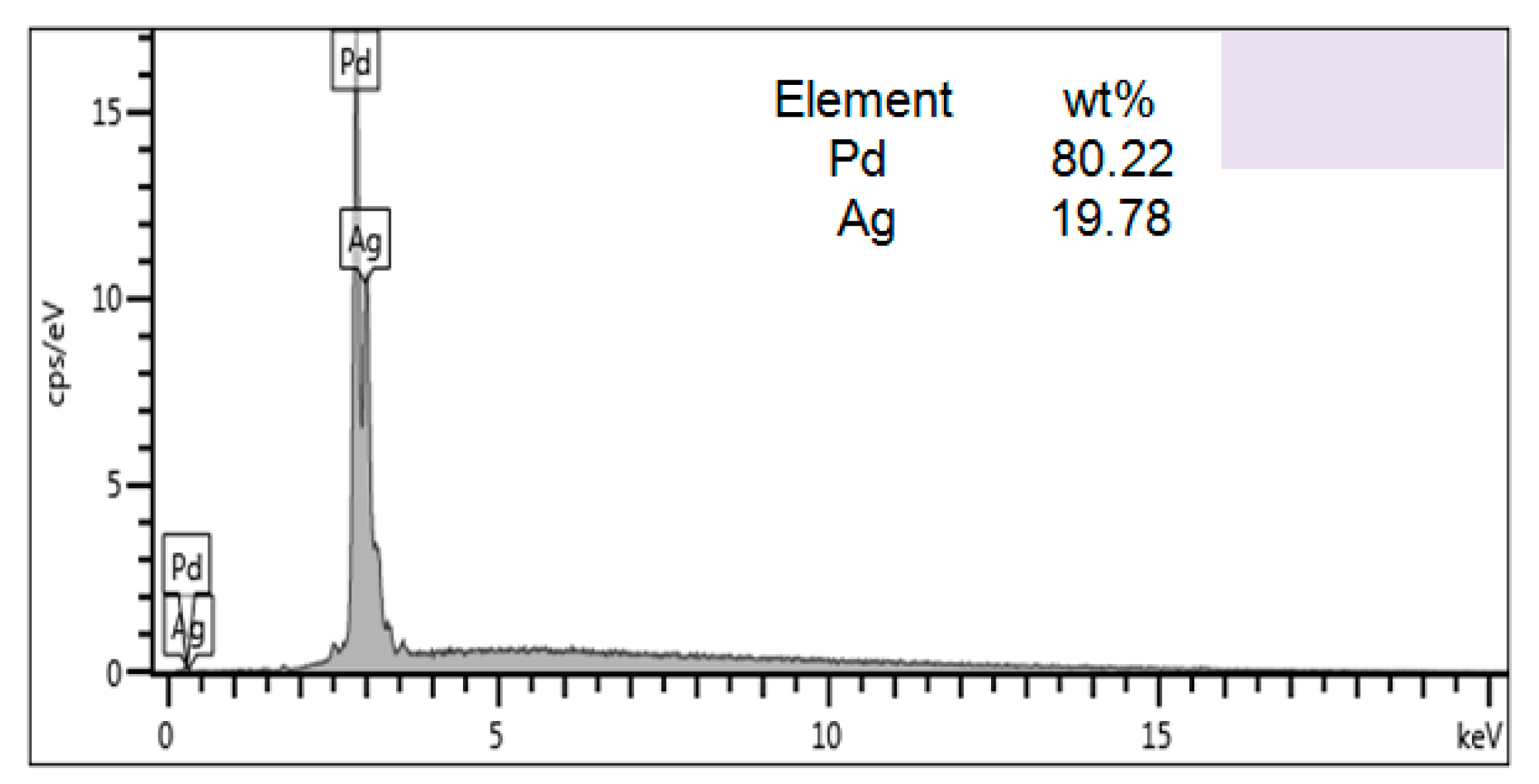
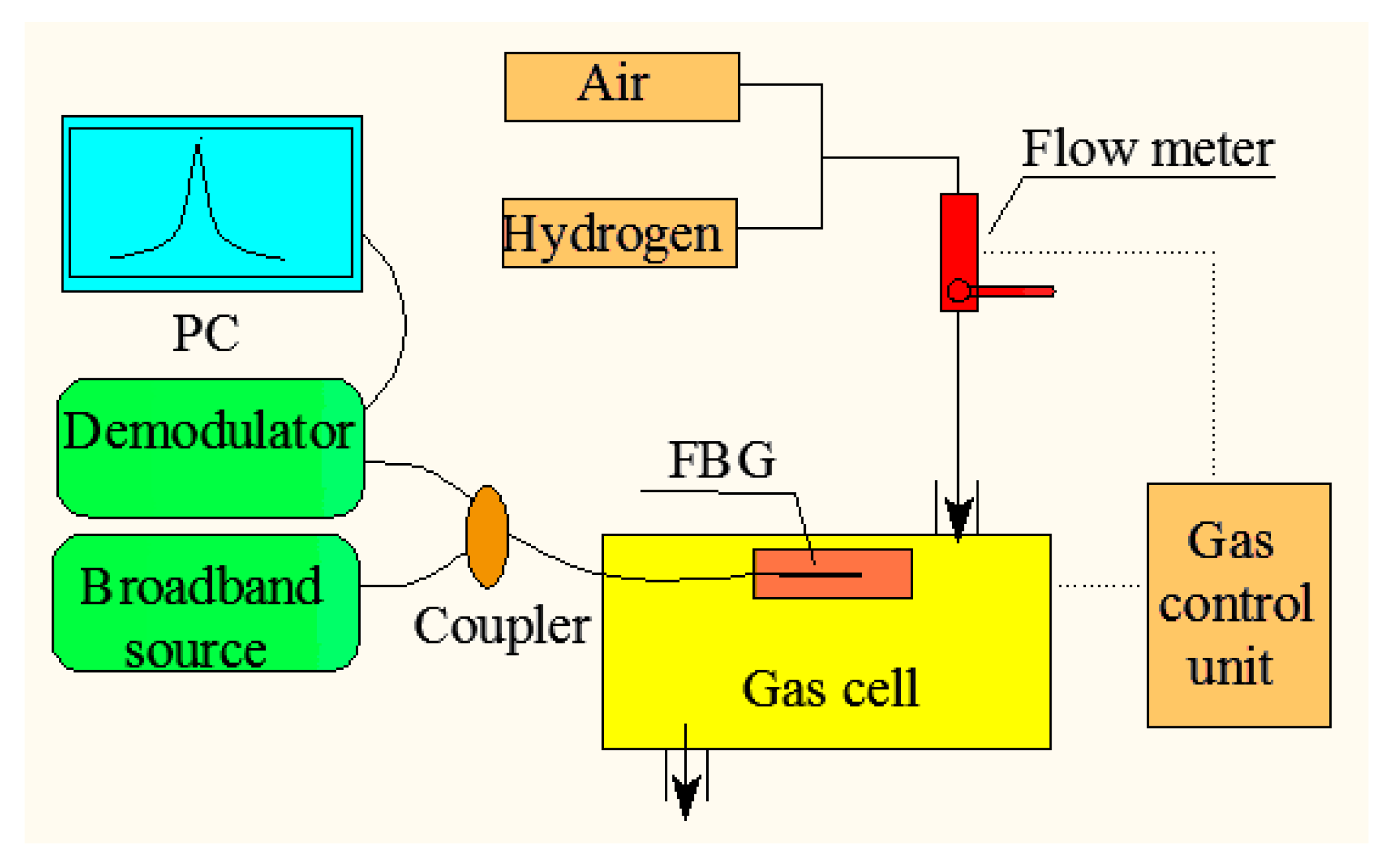
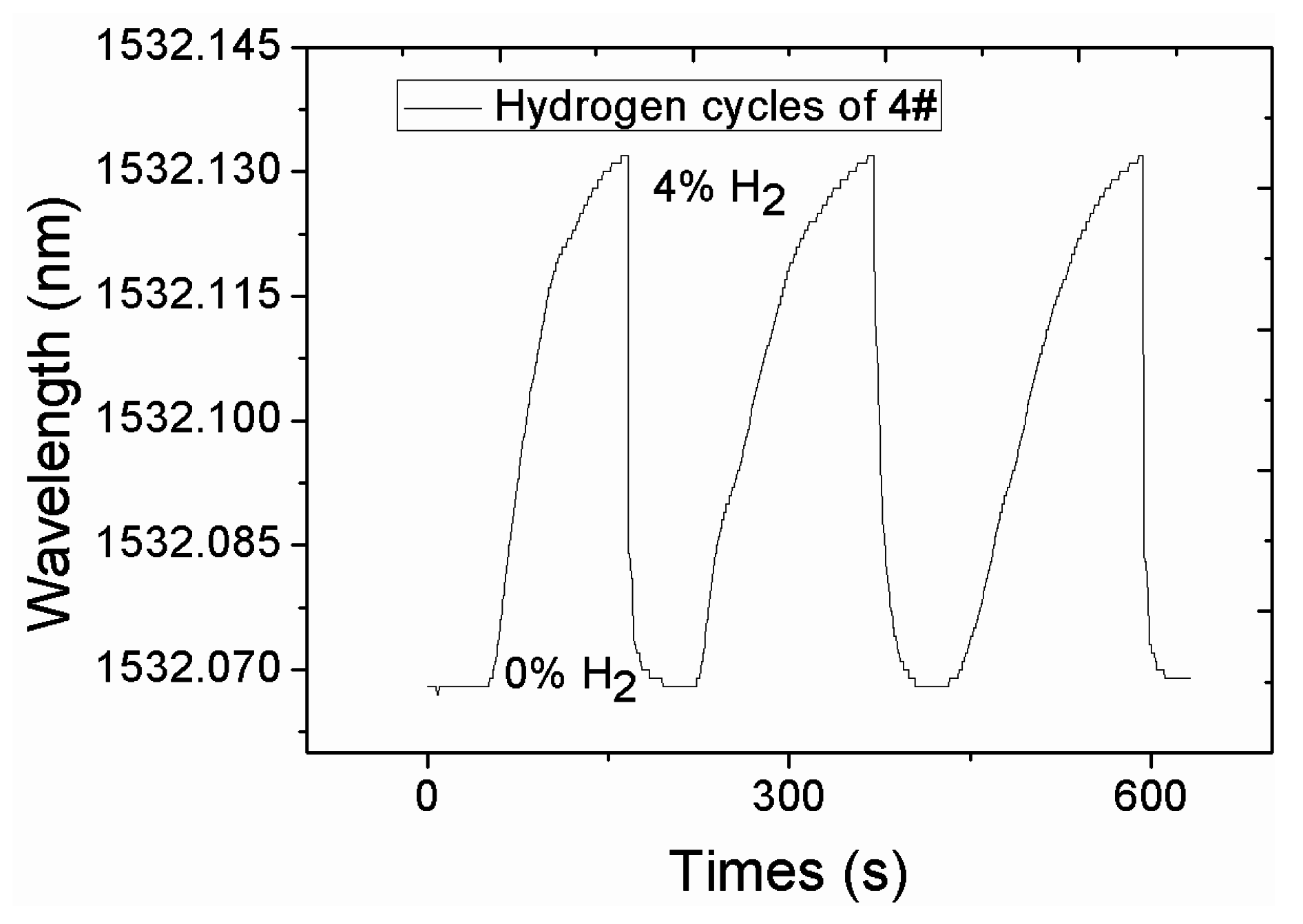
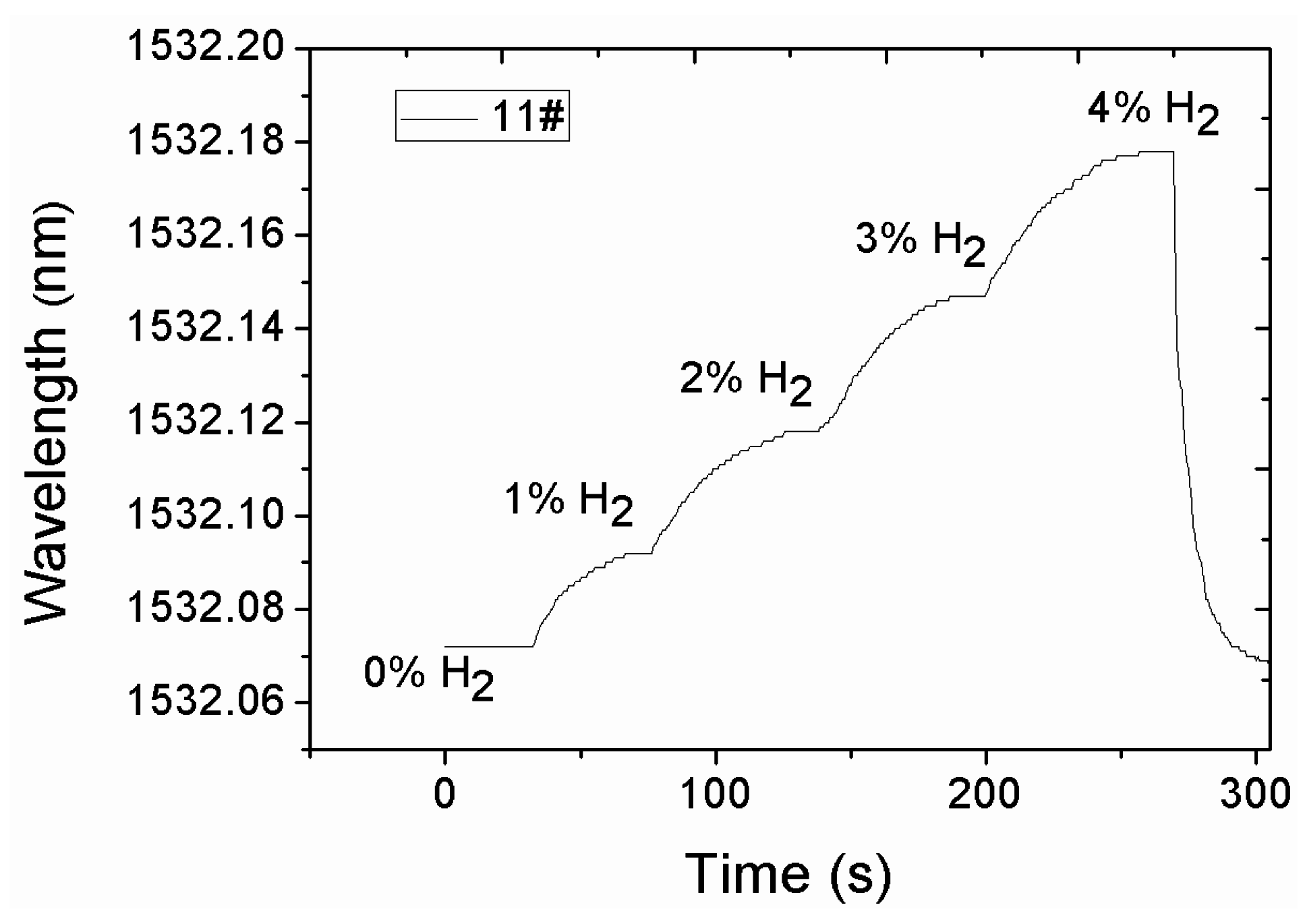
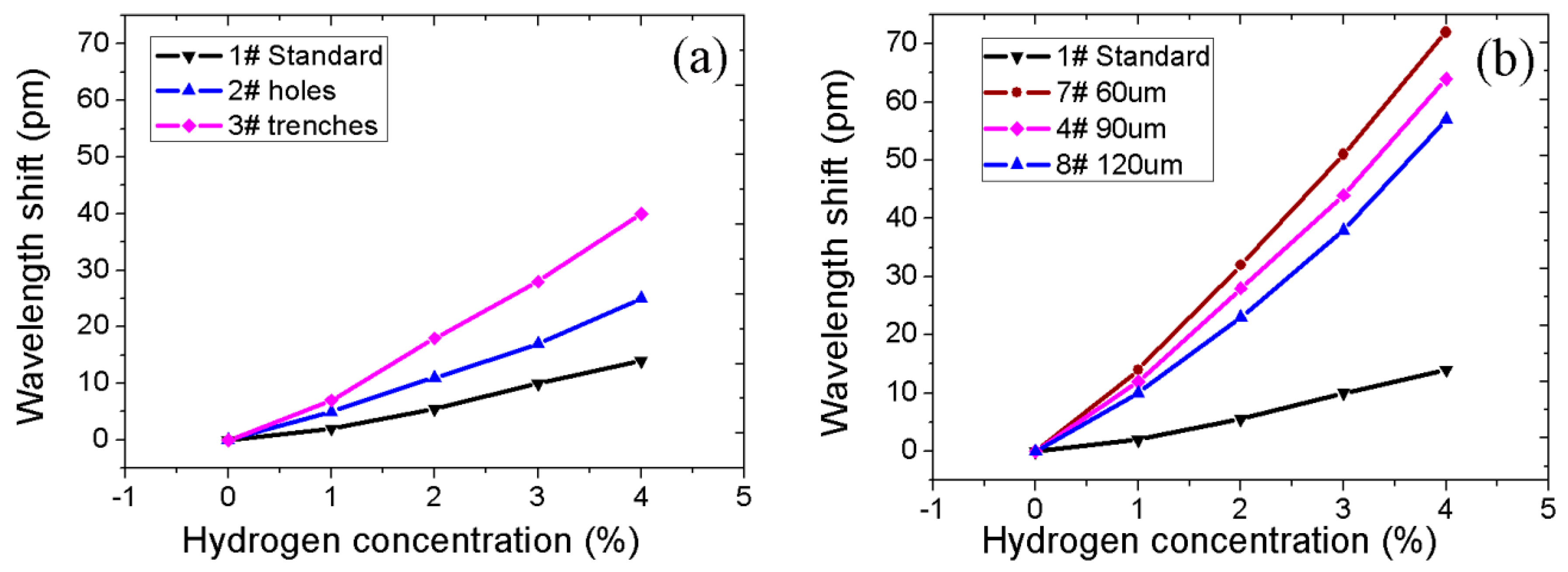
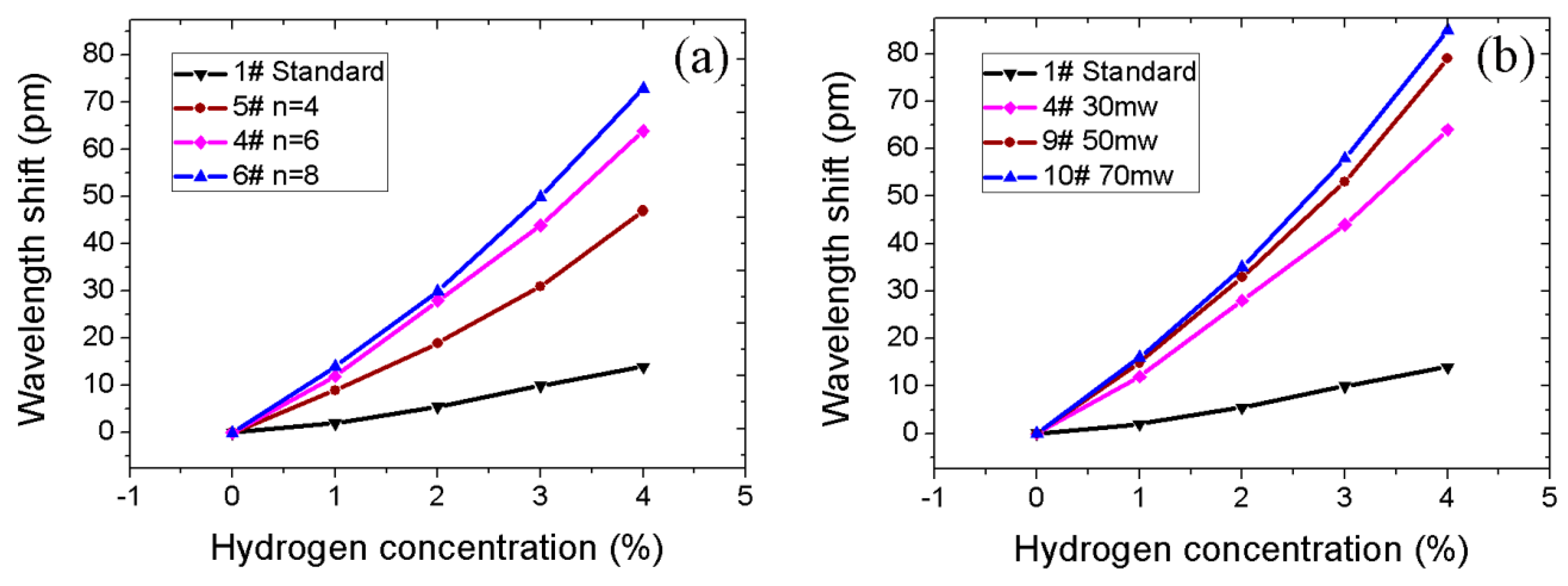
| Structural Type | Attenuator | Aperture | Frequency |
|---|---|---|---|
| trenches | Mode 2 | No. 7 | 1000 Hz |
| micro-pits | Mode 1 | No. 4 | 10 Hz |
| Sample No. | Spiral Pitch (μm) | Trench Laser Energy (mW) | Number of Trenches (n) |
|---|---|---|---|
| 1# | 0 | 0 | 0 |
| 2# | 90 | 0 | 0 |
| 3# | 0 | 30 | 6 |
| 4# | 90 | 30 | 6 |
| 5# | 90 | 30 | 4 |
| 6# | 90 | 30 | 8 |
| 7# | 60 | 30 | 6 |
| 8# | 120 | 30 | 6 |
| 9# | 90 | 50 | 6 |
| 10# | 90 | 70 | 6 |
| 11# | 60 | 70 | 8 |
© 2016 by the authors; licensee MDPI, Basel, Switzerland. This article is an open access article distributed under the terms and conditions of the Creative Commons Attribution (CC-BY) license (http://creativecommons.org/licenses/by/4.0/).
Share and Cite
Zou, M.; Dai, Y.; Zhou, X.; Dong, K.; Yang, M. Femtosecond Laser Ablated FBG with Composite Microstructure for Hydrogen Sensor Application. Sensors 2016, 16, 2040. https://doi.org/10.3390/s16122040
Zou M, Dai Y, Zhou X, Dong K, Yang M. Femtosecond Laser Ablated FBG with Composite Microstructure for Hydrogen Sensor Application. Sensors. 2016; 16(12):2040. https://doi.org/10.3390/s16122040
Chicago/Turabian StyleZou, Meng, Yutang Dai, Xian Zhou, Ke Dong, and Minghong Yang. 2016. "Femtosecond Laser Ablated FBG with Composite Microstructure for Hydrogen Sensor Application" Sensors 16, no. 12: 2040. https://doi.org/10.3390/s16122040
APA StyleZou, M., Dai, Y., Zhou, X., Dong, K., & Yang, M. (2016). Femtosecond Laser Ablated FBG with Composite Microstructure for Hydrogen Sensor Application. Sensors, 16(12), 2040. https://doi.org/10.3390/s16122040






